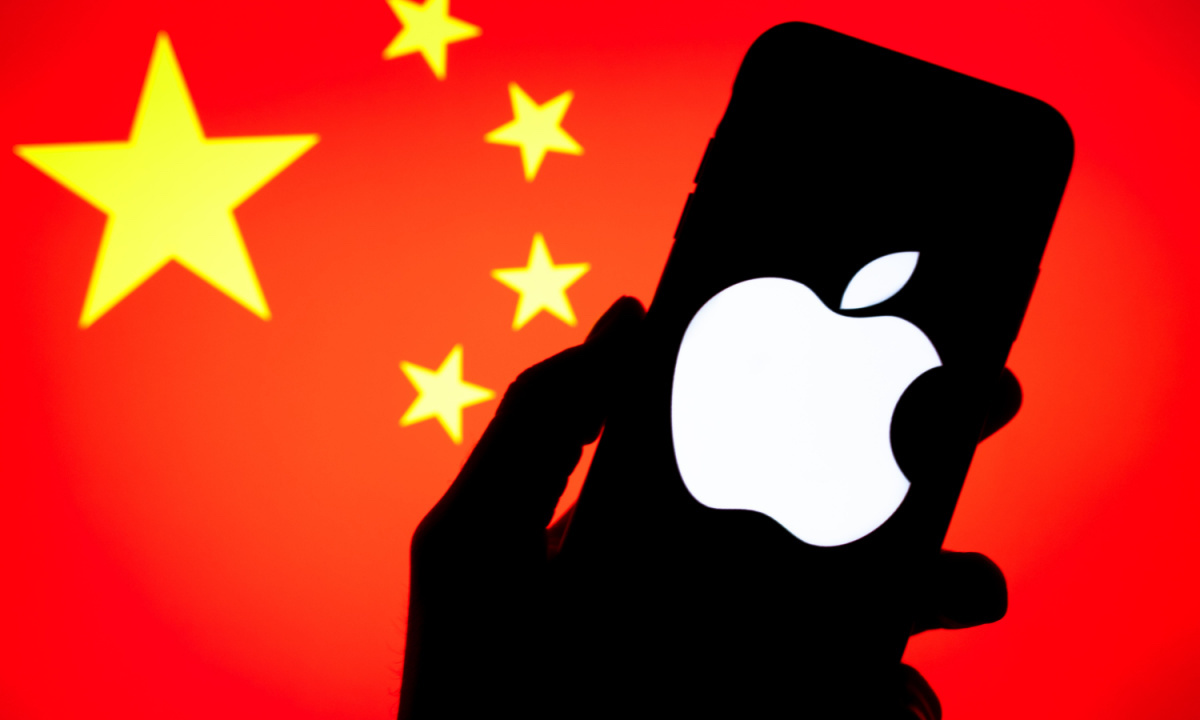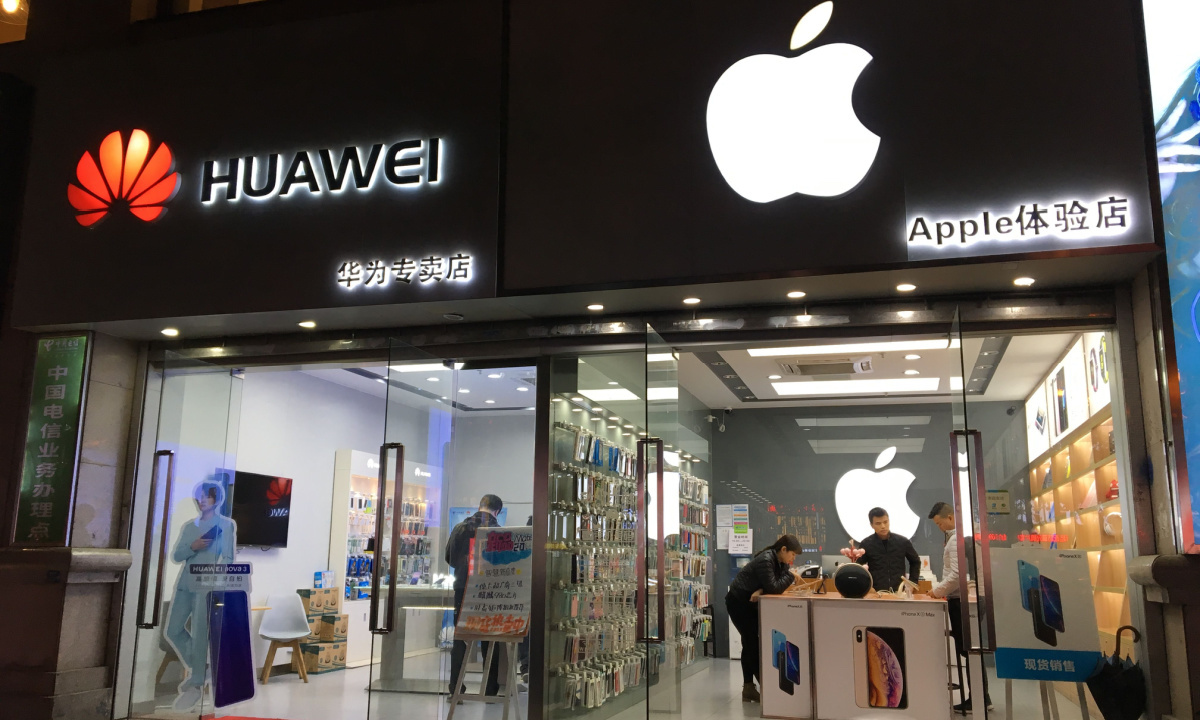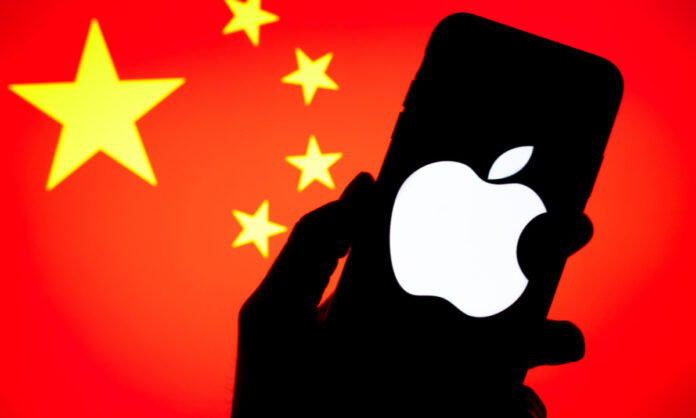Trouble in the Middle Kingdom: Apple’s iPhone Sales Plummet 18% in China The world’s most valuable company is facing a perfect storm in the world’s most populous nation. Apple, the iconic tech giant, is struggling to regain its footing in China, a market that was once a key driver of its unprecedented success. According to recent reports, iPhone sales in China have taken a drastic hit, plummeting a staggering 18% – a stark reminder that even the most seemingly invincible brands can fall victim to the complexities of the global market. As the tech landscape continues to evolve and competition intensifies, Apple’s woes in China raise important questions about the company’s ability to adapt to changing consumer preferences and navigate the intricacies of international trade. In this article, we’ll delve into the factors contributing to Apple’s China troubles and what this means for the future of the tech giant.
Apple’s China Conundrum

According to Counterpoint Research data, Apple’s iPhone sales dropped 18.2% in China during the last quarter of 2024, marking a significant decline in the company’s market share. This decline has led to Huawei regaining its leading position in the Chinese market, with a 15.5% year-over-year (YoY) sales increase.

Decline in iPhone Sales
The 18.2% drop in iPhone sales in China is a significant blow to Apple’s market share. According to Counterpoint analyst Mengmeng Zhang, “This is the first time since the U.S. ban that Huawei regained the leading position.” The decline can be attributed to stronger competition from Chinese rivals, as well as Apple’s slower rollout of AI features on its iPhones.

Huawei’s Resurgence
Huawei’s 15.5% YoY sales increase has enabled the company to regain its leading position in China. The company’s mid-end Nova 13 series and high-end Mate 70 series have been particularly successful, contributing to its growth.
Market Shifts
The shift in China’s smartphone market can be attributed to changing consumer preferences and competitor strategies. Chinese consumers are increasingly looking for devices with advanced AI features, which Apple has been slower to introduce. Meanwhile, Huawei and other Chinese rivals have been quick to capitalize on this trend, introducing their own AI-powered devices.
Apple’s AI Challenges
Apple’s slower rollout of AI features has affected its competitiveness in the Chinese market. The company has been unable to add AI features to iPhone 16s sold in China due to local restrictions, which require generative AI operators to secure government permission before debuting a product.
Lagging Behind
Apple’s slower rollout of AI features has put it behind its competitors, including Huawei and Google. According to The Big Phone Store CEO Steven Athwal, “Apple may be late to the AI surge compared to Google and Amazon, which have been adding AI to products for years. But Apple has always been about timing and refinement. While others rushed to put out the latest in AI tech, Apple focused on privacy, security, and user experience.”
Regulatory Hurdles
Apple faces regulatory hurdles in introducing its AI features in China. The company has been trying to secure partnerships with Chinese companies to roll out its AI features, but this has proven to be a challenge.
Partnership Strategies
Apple’s efforts to secure partnerships with Chinese companies are crucial to introducing its AI features in the Chinese market. The company has been working to partner with Chinese companies to develop AI-powered devices that meet local regulations.
Global Implications and Future Prospects
The decline in iPhone sales in China has global implications for Apple’s sales and market share. According to Counterpoint Research, Apple’s global market share dropped to 18% at the end of 2024, down from 19% the previous year.
Broader Market Trends
The global smartphone market is experiencing a shift towards devices with advanced AI features. Apple’s competitors, including Huawei and Google, are leading the charge in introducing AI-powered devices.
Upcoming Product Launches
Apple is planning to launch 20 new products in 2025, including the iPhone 17. The new device is expected to feature advanced AI capabilities, which could help Apple regain its momentum in the Chinese market.
Services Revenue Growth
Apple’s services revenue has been a key driver of growth for the company. According to Cash Flow Club investing group leader Jonathan Weber, “Growth will likely depend on rising services revenues this year as well, which has been the case for quite some time.”
Practical Considerations for iPhone Users
iPhone users can take steps to maintain their device’s battery health and performance. Enabling Optimized Battery Charging and charging the device overnight can help slow down battery capacity loss.
Battery Health and Performance
Battery capacity loss is a natural process, but it can be slowed down by following best practices. According to sujayshah, “Batteries are consumables; they lose a little capacity every time they are discharged, then recharged.”
Software Updates and Features
Software updates and features, such as Apple Intelligence, are essential for enhancing the iPhone user experience. Apple’s focus on privacy, security, and user experience has helped the company maintain a loyal user base.
Device Maintenance and Support
Device maintenance and support are critical for ensuring the longevity of an iPhone. Apple offers a range of support options, including battery replacement and iCloud Backup, to help users maintain their devices.
Competitive Landscape and Analysis
The competitive landscape in the smartphone market is rapidly changing. Chinese rivals, including Huawei, are gaining ground on Apple and other global players.
Chinese Rivals
Huawei and other Chinese rivals are developing their in-house AI offerings, which has helped them gain market share. According to Counterpoint director Tarun Pathak, “Chinese companies like Huawei were among the fast-growing brands, part of a group of firms developing their in-house AI offerings.”
Expert Insights
Experts agree that Apple’s embrace of AI technology could transform how people shop and interact with devices. According to The Big Phone Store CEO Steven Athwal, “Apple may be late to the AI surge compared to Google and Amazon, which have been adding AI to products for years. But Apple has always been about timing and refinement.”
Market Forecasts
Market forecasts suggest that the smartphone market will continue to evolve rapidly. According to Cash Flow Club investing group leader Jonathan Weber, “The most important new product for Apple in 2025 will be the iPhone 17, but the company should also debut a new Apple Watch, new notebooks and Macs, and possibly the next version of its Vision Pro.”
Conclusion
In conclusion, the recent report from PYMNTS.com highlighting Apple’s 18% iPhone sales drop in China underscores the ongoing challenges the tech giant faces in the world’s most populous country. As discussed in the article, the decline in sales can be attributed to a combination of factors, including increased competition from local smartphone manufacturers, a slowing Chinese economy, and rising trade tensions between the US and China. The main arguments presented in the article emphasize the significance of the Chinese market for Apple’s global sales and the company’s struggles to adapt to the evolving preferences and needs of Chinese consumers. The article also touches on the potential long-term implications of this decline, including the impact on Apple’s revenue and market share.
The significance of this topic cannot be overstated, as Apple’s performance in China has a direct bearing on the company’s overall financial health. The implications of this decline are far-reaching, with potential ripple effects on the global tech industry and the broader economy. As the world’s second-largest economy, China’s market trends and consumer behavior have a significant influence on the strategies and decisions of multinational corporations like Apple. Looking ahead, it is likely that Apple will need to reassess its approach to the Chinese market, investing in more targeted marketing efforts and product development that caters to local tastes and preferences. Furthermore, the company may need to diversify its supply chain and manufacturing operations to mitigate the risks associated with trade tensions and geopolitical uncertainties.

